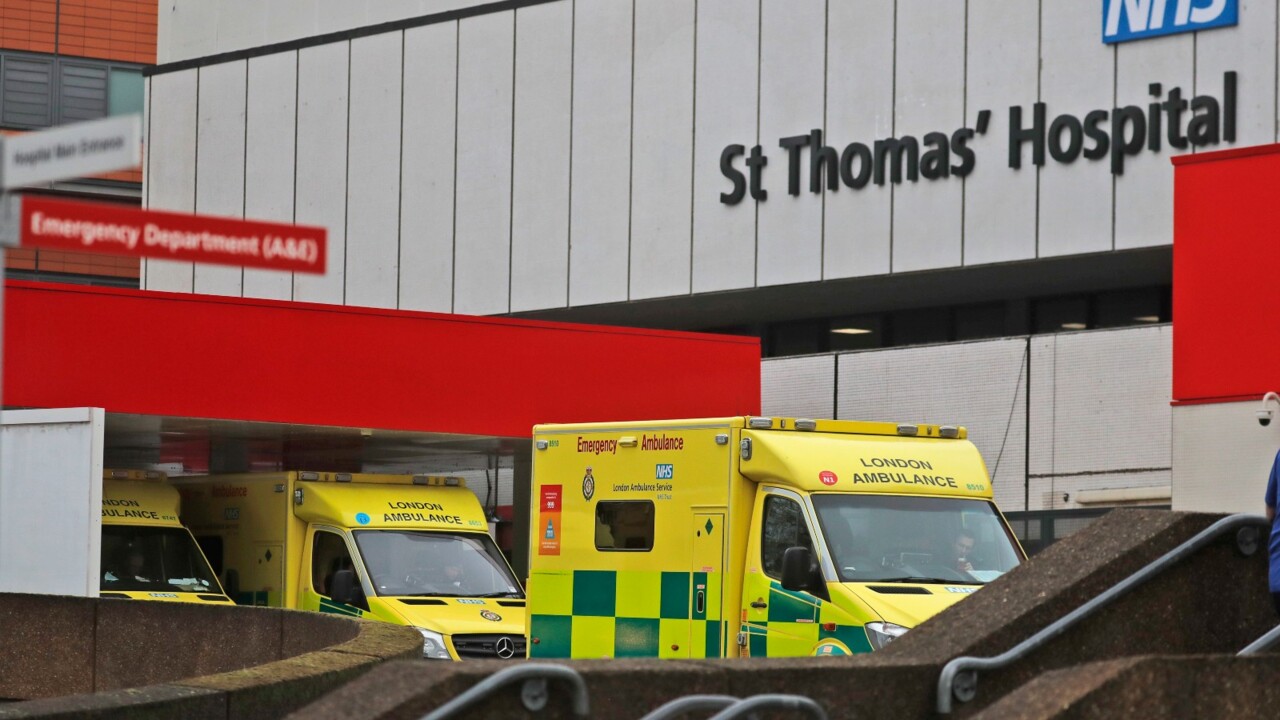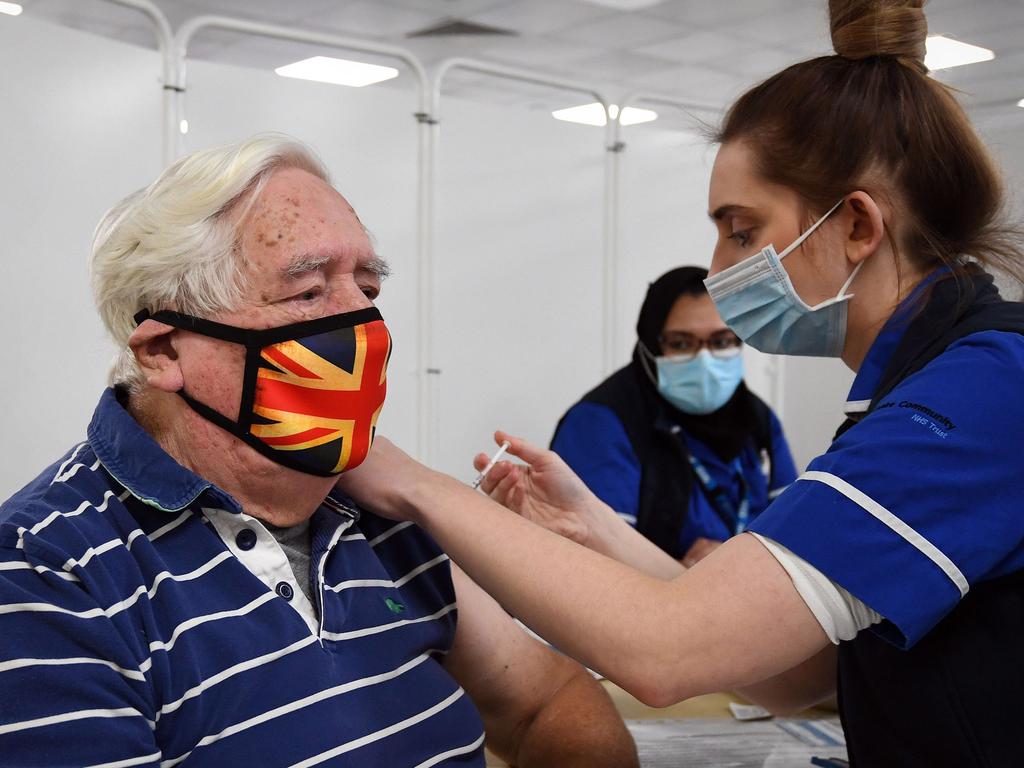Australians ‘living in a charmed COVID-19 bubble’

Los Angeles hospitals and morgues are full, the sick can wait eight hours for an ambulance, and numbers of those in their 30s, 40s and 50s are passing away. In England, scores of ambulances back up waiting to get the sick into crammed hospital wards. This is how 2020 ended, just as its early months had projected chaos among the dead and dying in hospital wards in northern Italy, and stacks of coffins dumped in parking lots in New York.
Yet, however privileged the moment here, a tense anxiety continues to grip the country, given past experience of the virus, how it can accelerate exponentially once it takes. And, indeed, we seem once again to be on the brink of it speeding out of control.

Dread at the threat of sudden, unexpected death is not new to our time. It pervaded the European Middle Ages, and not surprisingly so given the unrelenting presence of plague, famine and warfare — bubonic plague halved the population in the 14th century. The difference today, setting aside comparatively low mortality rates, is in the human response to the threat. In the Middle Ages, there was faith and superstition; today, reason and nihilism.
The dichotomy between faith and knowledge is pivotal to the metaphysics of the modern world and its discontents — above all, unease at the thought of death. Let me illustrate. In the Middle Ages, approaching plague could trigger an explosion of flagellation cults. Members believed that if they whipped their backs with steel-tipped leather thongs, even down to the bone, until they were covered in their own blood, the punishment would cleanse them of sin. God took retribution on sinners by afflicting them with disease — removing the sin created immunity. Here was rank superstition; but equally, faith, unquestioned in its belief that human life and death were part of a grand divine plan.

We moderns may conclude with satisfaction that superstition no longer governs our lives. The loss of faith, however, brought with it a deeper problem. The essence was brilliantly highlighted early on, in 1533, by Hans Holbein. In his huge painting of The Ambassadors, hanging in London (view at nationalgallery.org.uk, which offers a helpful interactive zoom), he portrayed two of the most powerful, wealthy and prestigious men in Europe, the French ambassador to the court of Henry VIII and his friend, the Bishop of Lavour. They stand life-size on either side of a two-tier table on which are placed the instruments of contemporary science, knowledge and arts — astronomy, arithmetic, a celestial globe, a sundial, various books, flutes and a lute. These men are masters of their world; emissaries of the new secular humanist philosophy. They have the full sweep of contemporary learning and knowledge at their fingertips.
The celestial globe in Hans Holbein the Younger's 'The Ambassadors' is set to 2.40pm on 12 July 1533: https://t.co/ceVfqO4MPr pic.twitter.com/y8DYrWPPjk
— National Gallery (@NationalGallery) July 12, 2017
Yet they are rooted to the spot, their faces pale, eyes blank and figures wooden. What has them in thrall is a blurred shape hovering just in front of them, the one thing in the painting with vitality. Its true form can be made out by looking diagonally up or down its elongation from close up to the plane of the painting. It is a skull. When observed properly, it reduces to the exact size of the ambassadors’ own heads. The two men see only a blur in front of them, a sinister blur that suddenly commands their lives. They have unconsciously repressed what they fear — death — by obscuring its form. But they have failed to overcome its menace.
Holbein’s message is simple. The tools of modern science; the books of modern knowledge; even the instruments of music (the lute has a broken string) are useless when confronted by the death question. They have no answer.

Seventy years later the master humanist, William Shakespeare, made the same point through his most important and continuingly influential character, Hamlet. The play, Hamlet, puts death anxiety under the microscope. From the moment early on in the story that the 30-year-old Prince meets death, in the guise of his murdered father’s ghost, he is paralysed. He incarnates Leo Tolstoy’s later maxim that if death loses its meaning, so does life. Even the “To be or not to be” speech, the most famous speech in the English language, has nothing to do with reflections on self and identity; it is a dreary monologue on suicide. Hamlet describes death as his one anticipated happiness. Aping Holbein, he speaks lovingly to a skull.
Is positing a dichotomy between faith/salvation and knowledge/logic being overdramatic? The most influential modern literature does not think so. Once the narrator in The Great Gatsby loses faith in his hero saviour, he foresees his own 30-year-old life stretching forward into bleak emptiness. The suicidal tramps in Waiting for Godot wander their world aimlessly, as they search futilely for an imagined saviour called Godot.
The faith/knowledge dichotomy should not be overdrawn. Lack of belief in some supernatural dimension to life does not inevitably trigger death anxiety. Sigmund Freud, for example, a self-proclaimed atheist, is reported to have approached his own death with Stoic fortitude and equanimity. This was despite his last 20 years being tortured by acute mouth and throat cancer and ill-fitting prostheses.

We live in a secular world in which a sense of life meaning is predicated on belief in truth and knowledge. But reason can be overvalued, especially when put under the pressure of shock anxiety. Certainly, in response to the COVID pandemic, science has been rightly cast centre stage: from medical treatment to vaccine research and production; from epidemiology to infection statistics and mortality rates. The needs of the time have underscored a key feature of modernity: that the doctor has replaced the priest as the preeminent figure in times of adversity; and the hospital has replaced the church as the paramount social institution.
This momentous social and cultural shift can go too far. There is risk that too much comes to be asked of knowledge. Individuals less able than Freud to master death anxiety may succumb to profound disturbances of character and irrationalities of behaviour — psychopathology. Without some equivalent to the priest, or rather without some obscure deep faith in something more to the human condition than mere material existence, a mind possessed by the blurred skull comes under threat — the mute freeze of Holbein’s ambassadors.
John Carroll is professor emeritus of sociology at La Trobe University.







Australia is now living in a charmed bubble. We concern ourselves with a few new cases of COVID-19 a day, while the US has recently been counting 370,000 daily infections and 4000 daily deaths; and Britain 55,000 infections and 1000 deaths — more than Australia’s total count.